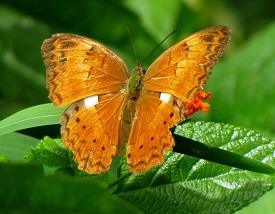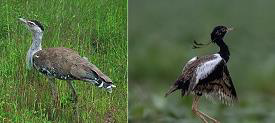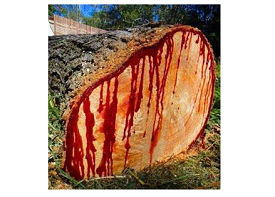
- Appointments
- Awards
- Bills & Acts
- Books & Authors
- Committees
- Deaths
- Defence
- Economic
- Environment
- Banking and Finance
- Important Days
- International
- Miscellaneous
- National
- Persons in News
- Places in News
- Regional
- Reports
- Resignations
- Science & Technology
- Sports
- July 2019 - Exams Resources
- Current Affairs - Quiz
- Current Affairs - Test
- Current Affairs - PDF
Current Affairs July 2019 - Environment
1 - Tamil Nadu declares Tamil yeoman as its state butterfly

Tamil yeoman (Cirrochroa thais) butterfly species has been declared the state butterfly of Tamil Nadu. The butterfly is endemic to Western Ghats. They are also known as Tamil Maravan. The butterfly is orange in colour with a dark brown outer ring.
Tamil Nadu is now the fifth state in the country to declare state butterfly. Maharashtra was the first to declare Blue Mormon as its state butterfly, followed by Uttarakhand (Common peacock), Karnataka (Southern bird wings) and Kerala (Malabar banded peacock).
2 - Centre asked all Urban Local bodies to set up cell for monitoring Rain Water Harvesting

The Centre has asked all Urban Local Bodies across the country to set up a cell each for effective monitoring of Rain Water Harvesting and revival of at least one water body in their areas. The cell should monitor the extent of groundwater extraction and groundwater aquifer recharge. This information should be displayed at prominent locations for public awareness.
The guidelines have been issued as part of the first phase of Jal Shakti Abhiyan. Jal Shakti Abhiyaan is a time-bound, mission-mode water conservation campaign.
3 - Tropical Storm Barry hits Louisiana in US

Tropical Storm Barry hit the US state of Louisiana as a Category 1 hurricane with sustained winds clocking in at more than 81 miles per hour. It quickly weakened to a tropical storm, however, with winds dropping to 70 miles per hour.
Tropical Storm Barry created big flooding risks in inland areas like greater Baton Rouge and possible rains of up to 25 inches in parts of southern Louisiana and coastal Mississippi due to which President Donald Trump announced state of emergency in Lousiana.
4 - NGT sets 3-month deadline to shut polluting industries across India

The National Green Tribunal has directed the Central Pollution Control Board, CPCB, to shut down polluting industries coming under "critically polluted" and "severely polluted" areas within three months. The bench was headed by NGT chairperson Justice Adarsh Kumar Goel.
The bench directed the CPCB to assess the quantum of compensation to be recovered from polluting units for the period of last five years. CPCB in joint study with state pollution control boards in 2009-10 had notified industrial clusters as Polluted Industrial Areas (PIAs) and they were ranked depending upon the Comprehensive Environmental Pollution Index scores.
5 - SC constituted a committee for protection of Great Indian Bustard and Lesser Florican

After the alarming extinction of two Indian birds, Great Indian Bustard and the Lesser Florican, the Supreme Court has constituted a high powered committee to urgently frame and implement an emergency response plan for the protection of these species.
The 3-member panel consists of: Deepak Apte-Director of Bombay Natural History Society (BNHS), Asad R Rahmani former Director of BNHS and member of governing body of Wetlands International South Asia and Dhananjai Mohan Chief Conservator of Forests of Uttarakhand.
6 - IUCN adds more than 7,000 to its Red List

International Union for the Conservation of Nature (IUCN) has added more than 7,000 animals, fish and plants to its endangered Red List. The IUCN Red List of Threatened Species included assessments for 105,732 species, of which 28,338 species are threatened with extinction.
The Red list shows that every 5th species is threatened with extinction. IUCN Red List of Threatened Species is worlds most comprehensive inventory of global conservation status of plants and animal species.
7 - Researchers discovered Indias first dragon blood-oozing tree

Dracaena cambodiana, a dragon tree species, discovered in Assams west Karbi Anglong district became Indias first dragon blood-oozing tree. A plant that provides dragons blood is meant to use as bright red resin in medicine, body oil, varnish, incense and dye. A team of researchers led by Assam forest officer Jatindra Sarma discovered the tree species.
Dracaena cambodiana seeds have high value importance in medicinal, ornamental and ecological use such as antifungal and antibacterial compounds, antioxidants released by parts of plant.